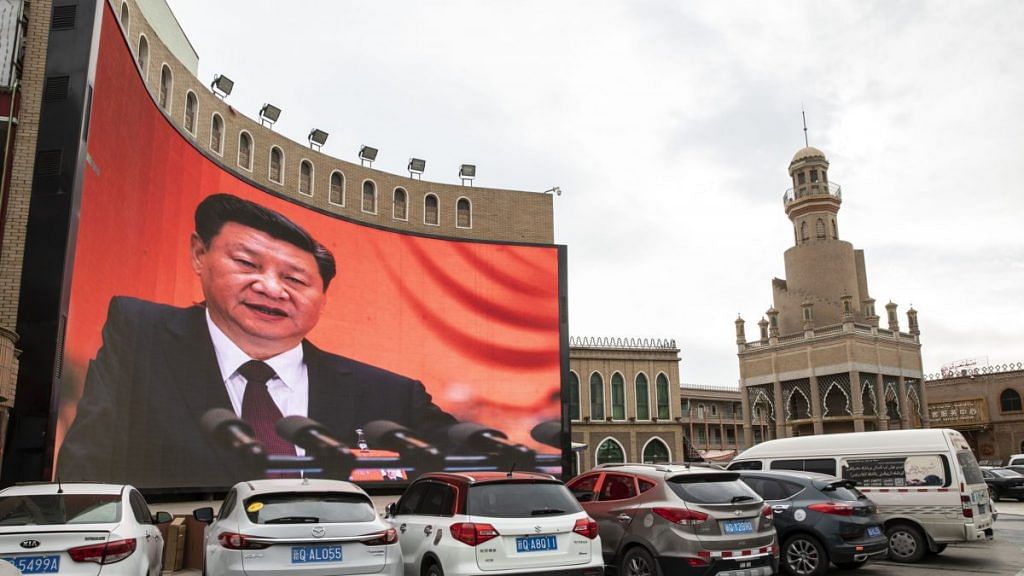Vasily Vereshchagin was the court painter of Général Konstantin Petrovich von Kaufmann, the man who captured central Asia for the Tsar in the mid-1800s. Vasily’s brilliant paintings of what was then collectively called Turkestan, captured the Russian public imagination — showing audiences back in Sankt-Petersburg the ‘barbarism’ or ‘exoticness’ of these Asian regions and why Holy Mother Russia needed to extend her ‘benevolence’ to this region.
Vasily’s paintings set in motion the Orientalist phase of Russian art, where every Tsar wanted something Oriental (central/south Asian) in his palace. The most glorious of this being parts of the Yusupov Palace (the same Yusupovs who assassinated Rasputin and were rumoured to be richer than the tsar). The public also embraced this Orientalist phase with the most prominent Russian composers incorporating faux Oriental themes in their music, be it Aleksandr Borodin’s stunning Polovtsian dances in the opera Prince Igor, or the incredibly dramatic Scheherazade by Nikolai Rimsky-Korsakov.
Vasily, like all good propagandists, also romanticised ‘good Orientals’. His famous painting of the British blowing up Indian mutineers with cannons in 1857 became a byword for the tyranny of the British during the Crimean War much later and probably justified Russia’s need to conquer India from Britain. The British Crown purchased the painting and it was never seen again.
Fast forward to 2020. While we no longer need court painters for propaganda, we do still need propaganda. However, unlike Russian influence and psyops (psychological operations) that have progressed and allegedly ‘regime changed’ the US in 2016 (something the USSR had failed to do), the Chinese psyops are still stuck in the 1800s.
Also read: Modi’s India isn’t Mao’s China. Silly forecasts assume we’ll let corona kill millions of us
The China story
One simple example of China’s absurd propaganda is the story that has now become viral on China’s social platform WeChat, as pointed out by The Hindu’s journalist Ananth Krishnan.
This story takes the reality of Indian life and spins it into an altogether fanciful yarn. It centres around a Chinese businessman living in India, who tells his audience that all Indians are lazy, and need constant supervision (largely true, because quality control is a function of labour laws); is entertained by a doctor taken into what is subtly implied to be a Covid-19 isolation ward (because, you know, Indian doctors are so keen to entertain Chinese businessmen with an anthropological bent of mind) and sees horrific conditions.
The Chinese businessman insists Indian media is state-controlled for the duration of this crisis and that in India Hindu-Muslims riots are as routine an occurrence as visiting the grocer. He says Indians don’t practice social segregation because rich Indians love to look at poor people to feel good about how they live (the reality is in a democracy, where lack of rule enforcement substitutes for social mobility, such coexistence of slums and posh life is just a social inevitability). He finally claims it doesn’t matter because India is a lawless place where the rich are protected by gun-toting guards and Indian has the second-highest ownership of guns.
Also read: The big coronavirus cover-up: Fighting truth and coronavirus, the China way
PR disaster
This story tells you more about China and Chinese psychology than it does about India.
The reality is the information restrictions on Chinese citizens called the “great firewall of China” mean that the Chinese have about as much access to the outside world as Russians did in the 1850s. This despite being a phenomenally technologically forward society and increasing numbers of Chinese travelling the world. Note where they travel — Europe, America and Australia. You see they want to see what’s ‘better than them’, not what’s ‘worse than them’. Since much of its social and economic indicators are far behind the West or indeed the Middle East, for long, China has used ‘near-Occidentalism’ to show its population how good they have it. Obviously, India, which got left behind economically in the 1980s and is considered a rival, becomes the obvious target of these stories.
The second factor that influences Chinese psyops is that just like India, the investment in primary research in the humanities is almost non-existent. Unlike Western students who opt for semesters or internships abroad, most Chinese do not. Consequently, you have a problem where those tasked with psyops neither have a good understanding of the outside world nor any interest in gaining any.
This is why the coronavirus pandemic has been a PR disaster for China, starting with the use of bots on Twitter to being unable to spin stories to cover the mass failure of Chinese medical equipment.
So, the only tool China can use — mostly in a ham-handed fashion — is money, be it multi-page ads in The New York Times or The Washington Post to denying or restricting market access.
In short, China is good at many things, sadly it’s propaganda wing was, is and will remain a 19th-century anachronistic joke in the 21st century. We might as well enjoy it in all its glory.
The author is a senior fellow at the Institute of Peace and Conflict Studies. He tweets @iyervval. Views are personal.
